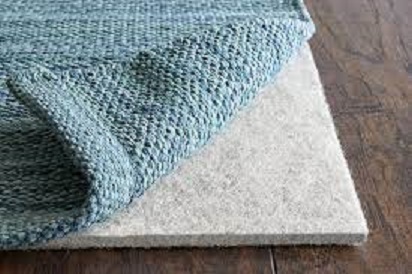Is Denim Insulation Good for Soundproofing?
What is denim insulation? Denim insulation is a material that people use for soundproofing their homes and offices. It’s made from recycled jeans and can be used to create acoustic barriers, noise-reduction panels, or even as a ceiling tile. The idea of using old jeans to make new products was first introduced in the 1970s by Levi Strauss & Co., but it wasn’t until recently that this idea became popular with homeowners looking for ways to save money on expensive construction projects. In this article, you’ll learn more about what denim insulation is, how you can use it around your home or office, and whether or not it’s good for soundproofing!

What is Denim Insulation?
Denim insulation is a man-made product used to keep buildings warm in the winter and cool in the summer, while also reducing energy costs. It is a type of thermal and soundproofing material that comes from recycled blue jeans – it’s made of 100% cotton fibers that are spun into yarn and then woven together for use as fiberglass replacement material.
It has been used for many years in the automotive industry to reduce noise and heat transmission, and more recently it’s become popular as an inexpensive option for homeowners looking into DIY soundproofing projects. For example, some people suggest using this type of insulation between drywall panels or under carpet pads to help dampen sounds coming through floorboards or walls.
Is Denim Insulation Good for Soundproofing?
On one hand, most types of cotton-based materials do a decent job at dampening noise which makes them great for use as general insulators. In fact, it’s been found to be around 30% better at soundproofing than traditional fiberglass! Denim insulation became a popular choice for DIY soundproofing because it’s fairly inexpensive and easy to come by. Most people looking into using denim as an insulator are trying to stop or reduce noise coming from the outside, but there are certain applications where this material can be used on the inside of your home too.
But using denim insulation doesn’t mean you’ll be living in an echo chamber or a recording studio. They’re not exactly designed specifically to be used where you want maximum quietnesses such as around your home theater or music room. Sometimes, you can actually end up with more echo or reverb than before if the insulation is too thick. It’s also important to know that denim insulation does little to block low-frequency noises because of how thin the actual fibers are. However, when used properly with other materials like mass-loaded vinyl (MLV), then it will add some extra sound dampening benefits in a room.
Denim Insulation Pros and Cons:
As with any type of insulation, there are pros and cons associated with using this material from an acoustic point of view.
Benefits of Denim Insulation
Denim insulation comes in batts that can be installed between exposed studs and in loose-fill blow-in material so it can be used in different places.
Denim insulation offers the same R-value as standard fiberglass insulation and offers great soundproofing properties such as higher noise reduction coefficient (NRC) and sound transmission class (STC). Such ratings are not the only benefits of denim insulation that make it an attractive option.
Denim Insulation Is Eco-Friendly
One of the main benefits of using denim insulation is that it’s eco-friendly. Denim insulation is a 100% recyclable material that uses only organic cotton fibers and other non-toxic materials. It’s also made from post-industrial waste such as scraps off jeans, so it doesn’t require the harvesting of virgin resources like many fiberglass manufacturers do to get raw materials for their products. Also, it prevents waste from going into landfills and oceans where it would take hundreds of years to decompose.
Denim Insulation Is Flame Retardant
Denim insulation has been treated with a fire retardant chemical that allows it to meet all current safety standards for use in buildings. This means you can safely install this type of insulation at home without having the worry about your house burning down if there was ever an electrical or another related issue. In addition, denim is chemically stable and will not emit toxic fumes like fiberglass when exposed to high heat levels such as those found during fires; however, once these fibers get wet they do absorb moisture and become heavy which could pose a risk of falling through floors especially on upper floors.
Thermal Conductivity of Denim Insulation
Denim insulation has a thermal conductivity rating of about 0.038 W/m-K which is lower than fiberglass (about 0.043) and much less than mass-loaded vinyl (MLV). The higher this value, the more heat it can transfer resulting in colder spaces that are harder to heat up during wintertime or hotter rooms where air conditioning units must work overtime to keep you cool during summer months. This means denim insulation works well as an overall insulator even though its NRC values don’t seem all that impressive at first glance.
Denim Insulation Is Easy to Install
Denim insulation is easy to install. It can be cut with a basic utility knife and it’s easy to stuff into tight spaces because of the way it expands when you first open up a pack. However, if you’re not careful enough during installation then there could actually end up being more sound leakage than before as this material isn’t designed for high-performance applications that require great levels of quietness or other desired acoustic properties.
Downsides of Denim Insulation
Even though denim insulation does offer some great benefits, there are also a few downsides to consider:
Denim Insulation Is Too Expensive
Denim insulation is too expensive compared to other types of insulation like fiberglass or cellulose. This means you might want to opt for another type if your goal is to save money on soundproofing materials rather than spend more on this option that doesn’t offer better noise control results.
Denim Insulation Requires a Vapor Barrier
One of the biggest downsides to using denim insulation is that it requires a separate waterproofing layer underneath it otherwise there could be moisture damage and mold growth. This means you’d need to pay extra for materials like polyethylene sheeting, house wrap, or other types of vapor barriers which can raise project costs considerably if your goal was simply to use this type of material as an eco-friendly soundproofing solution.
How to Apply Denim Insulation? Step-By-Step Guide
If you’re still interested in using denim insulation for soundproofing purposes then here’s a basic guide on how to apply it:
- Start by measuring the length and width of each room that needs better noise control. Add up these numbers to get an estimate for how much material you’ll need in total assuming there are no through-wall penetrations such as doors or windows.
- Prepare all surfaces. No matter what type of soundproofing insulation is being installed for this job whether it’s denim or something else like fiberglass or cellulose-based products make sure all exposed surfaces have been covered with an appropriate protective material such as latex paint instead of regular wall paint because some types will react badly when combined together resulting in bubbles forming on top after drying while others may not mix well at all depending on how sensitive each one is towards other chemicals so always do your research before starting any given project and take precautions accordingly by wearing gloves
- Purchase enough denim insulation so you have at least 15% extra just in case your measurements were inaccurate when compared to actual material amounts needed. If possible, purchase more than 20% extra because this could help compensate if any mistakes happen during installation which is fairly common with many do-it-yourself (DIY) projects like this one. Also, keep in mind that you’ll need tarps, drop cloths, and other types of protective materials to help keep your new insulation clean during installation.
- Place a vapor barrier underneath the entire flooring area where denim insulation will be installed. This is especially important if there’s concrete or wood below which can easily absorb moisture if not protected with an additional layer like plastic sheeting, house wrap material, or something similar. The same principle applies when insulation denim is being used along any exterior walls.
- Cut out each piece of denim insulation using a sharp utility knife so it’ll be ready to stuff into any small or large crevice in the room where noise control is needed. Make sure there are no loose edges that could cause sound leakage when touched, stepped on, or otherwise disturbed from their current position. keep in mind that this material isn’t designed for high-performance applications and may not have sufficient acoustic properties which would require more precise cutting methods compared with other types of commercial building materials like fiberglass insulation which can easily be snapped apart by hand without needing a blade.
- Install each piece of denim insulation carefully one at a time starting from an inside corner going outwards towards the next closest interior wall. Do this until you’ve completely covered all four corners throughout each room requiring better noise control.
Conclusion
Using denim insulation for soundproofing purposes is a viable, cheap, and easy way to help muffle outside noise while reducing energy costs at the same time. However, it’s far from being the most effective one so don’t expect any miracles here when using this type of material compared with other types or brands specifically designed to better contain noise instead of letting it pass freely through walls. This material isn’t compatible with some types of building materials and may not provide enough benefits on its own when used by itself despite being highly affordable. However, it can still be combined with other eco-friendly solutions.
If possible, consider hiring an experienced contractor to help finish up the job. Such a decision could save money in the long run if anything goes wrong during installation due to inexperience.



